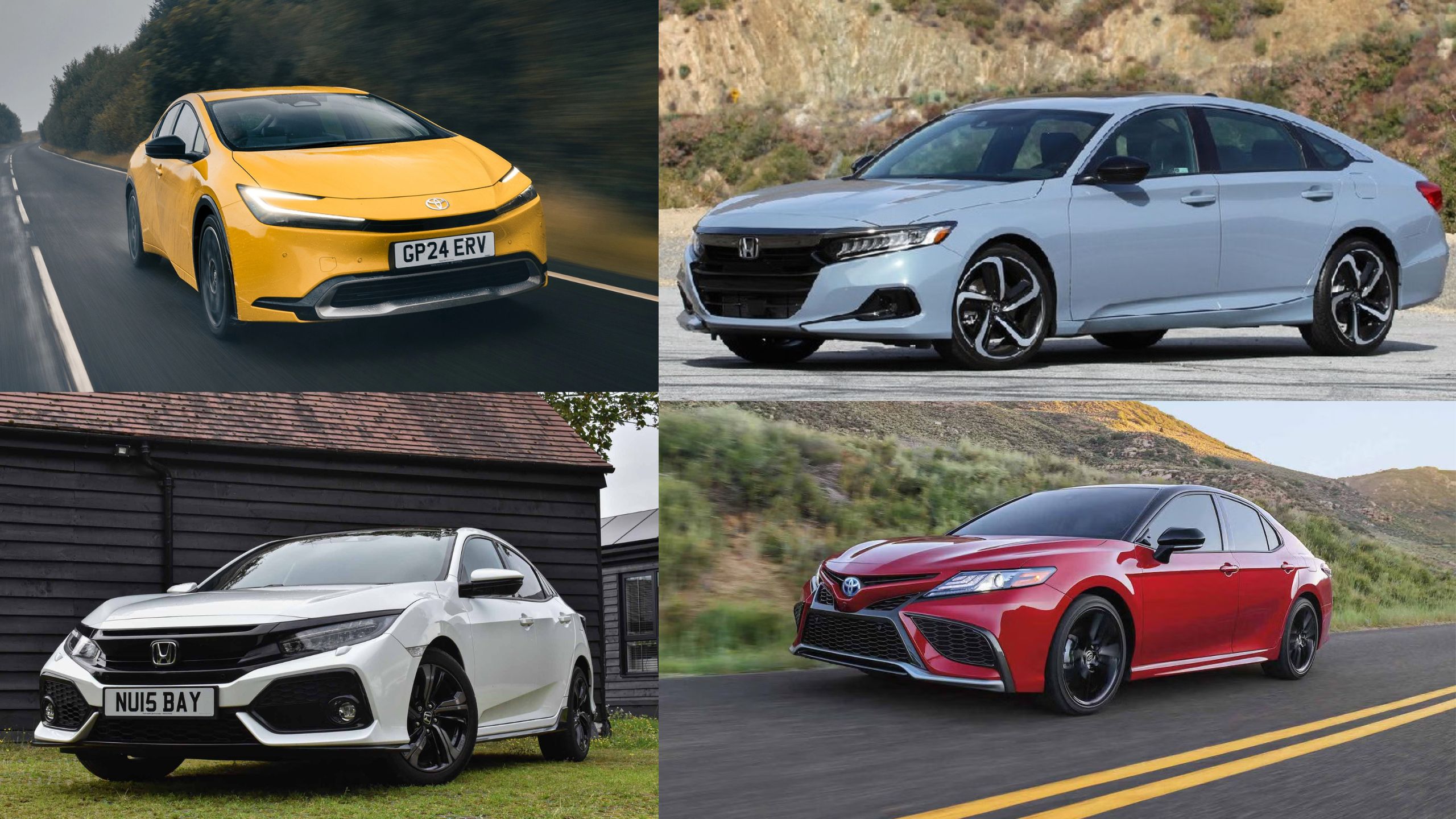The rideshare industry demands vehicles that can withstand continuous operation, high mileage, and frequent passenger turnover while maintaining reliability and comfort. For drivers looking to maximize their investment, choosing the right vehicle is crucial to long-term success.
The ideal rideshare car combines durability, fuel efficiency, reasonable maintenance costs, and passenger comfort all factors that directly impact a driver’s bottom line.
While flashy luxury models might attract higher ratings initially, veteran drivers know that longevity trumps luxury in the rideshare game. The vehicles that truly excel are those that can rack up 200,000+ miles while minimizing downtime and repair costs.
This list highlights ten vehicles with proven track records for reliability and durability under the demanding conditions of rideshare driving.
From hybrid powertrains that save thousands in fuel costs to conventional models known for their mechanical simplicity and parts availability, these vehicles represent the smart choice for professionals who depend on their cars for their livelihood.
Each selection considers the total cost of ownership alongside the specific demands of rideshare platforms like Uber and Lyft.
1. Toyota Prius
The Toyota Prius has earned legendary status among rideshare drivers, and for good reason. This hybrid pioneer continues to set the standard for reliability in high-mileage applications, with many examples easily exceeding 300,000 miles before requiring major repairs.
The secret behind the Prius’s longevity lies in its innovative hybrid system that reduces strain on the engine.
While conventional vehicles run their engines continuously, the Prius alternates between electric and gas power, effectively reducing engine wear by thousands of hours over the vehicle’s lifetime.
Fuel economy remains the Prius’s strongest selling point, with newer models achieving up to 58 mpg in city driving precisely where most rideshare miles accumulate.
This translates to approximately $1,500-2,000 in annual fuel savings compared to the average sedan, a significant amount when calculated over a five-year ownership period.
The regenerative braking system also extends brake pad life considerably, with many drivers reporting 70,000+ miles before requiring their first brake service.
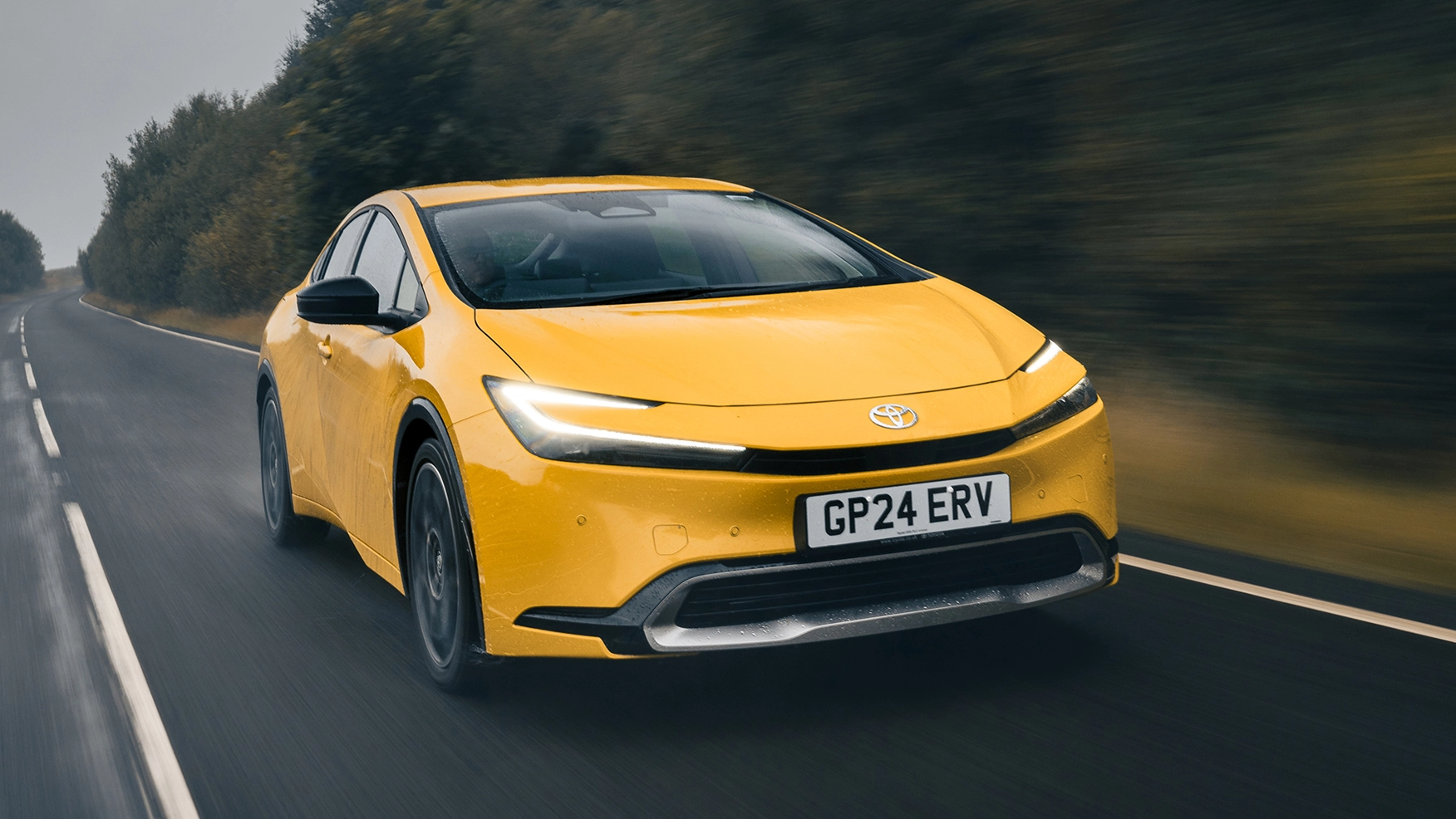
Maintenance costs further cement the Prius’s position as a rideshare favorite. Toyota’s reputation for building durable components means fewer trips to the mechanic, while the widespread popularity of the model ensures parts availability and competitive service pricing.
The hybrid battery once considered a liability has proven remarkably resilient, with most units lasting well beyond 150,000 miles and replacement costs having fallen significantly as third-party options have emerged.
Inside, the Prius offers adequate passenger space and comfort for rideshare duties, particularly in its more recent generations. The hatchback design provides excellent luggage capacity for airport runs, while the quiet electric operation at low speeds enhances the passenger experience.
Though not the most luxurious vehicle, its practicality and proven reliability make the Toyota Prius the benchmark against which all other rideshare vehicles are measured.
2. Honda Accord
The Honda Accord stands as one of the most dependable sedans ever produced, with a well-earned reputation for mechanical resilience that makes it ideal for the demands of rideshare driving.
Honda’s commitment to engineering excellence is evident in the Accord’s powertrain, which frequently delivers 250,000+ miles of service when properly maintained.
The 4-cylinder models in particular strike an optimal balance between performance and durability, with their timing chains (rather than belts) eliminating a major maintenance expense that affects many competitors.
Passenger comfort a critical factor for maintaining high driver ratings is a notable strength of the Accord. Its spacious interior offers among the best rear legroom in the midsize segment, while supportive seating provides fatigue reduction for drivers spending 8-12 hours per day behind the wheel.
The cabin noise levels are well controlled, creating a pleasant environment for conversation between passengers and drivers a subtle but important factor for earning five-star reviews.
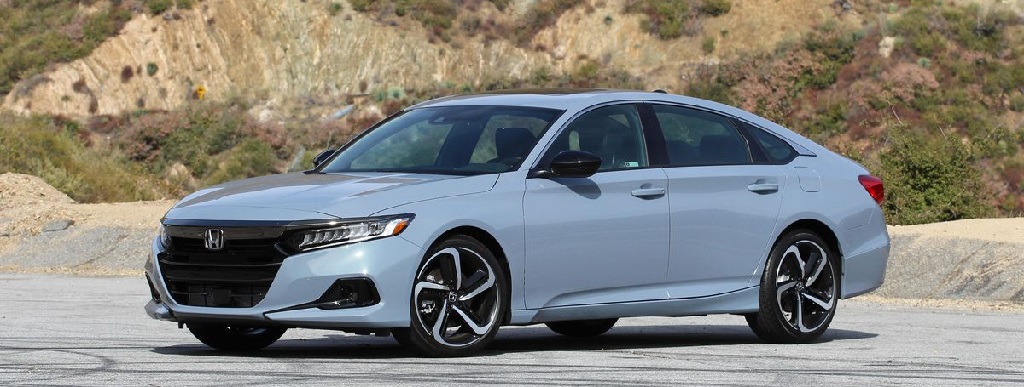
Fuel efficiency in the non-hybrid Accord models hovers around 30-38 mpg in mixed driving conditions, while the hybrid variants push this figure into the mid-40s.
This translates to operational costs that remain competitive even against smaller vehicles. The Accord’s resale value consistently ranks among the highest in its class, preserving equity for drivers who eventually upgrade their vehicles after several years of service.
Maintenance simplicity further enhances the Accord’s appeal for rideshare use. Many routine maintenance tasks can be performed by moderately skilled owners, reducing dependency on professional service centers.
When professional service is required, the widespread dealer network and abundance of independent mechanics familiar with Accords ensure competitive pricing and minimal downtime a crucial consideration when your vehicle is also your source of income.
The Accord’s combination of passenger-pleasing comfort, drivetrain durability, and reasonable operating costs makes it a perennial favorite for rideshare professionals seeking years of reliable service.
3. Toyota Camry
The Toyota Camry has earned its place in rideshare fleets through decades of proven reliability and straightforward mechanical design. Toyota’s flagship sedan combines the durability of overbuilt components with assembly precision that minimizes issues as vehicles age.
Numerous documented cases exist of Camry models exceeding 500,000 miles on original engines and transmissions a testament to their engineering integrity and suitability for high-mileage rideshare applications.
The Camry’s appeal for rideshare work extends beyond mere durability. Its cabin dimensions provide excellent passenger space, particularly in the rear seat where customers spend most of their time.
The trunk capacity accommodates multiple suitcases with ease, making airport runs often the most lucrative rideshare trips a practical specialty. Ride quality strikes an ideal balance between isolation and control, preventing passenger discomfort without feeling disconnected from the road.
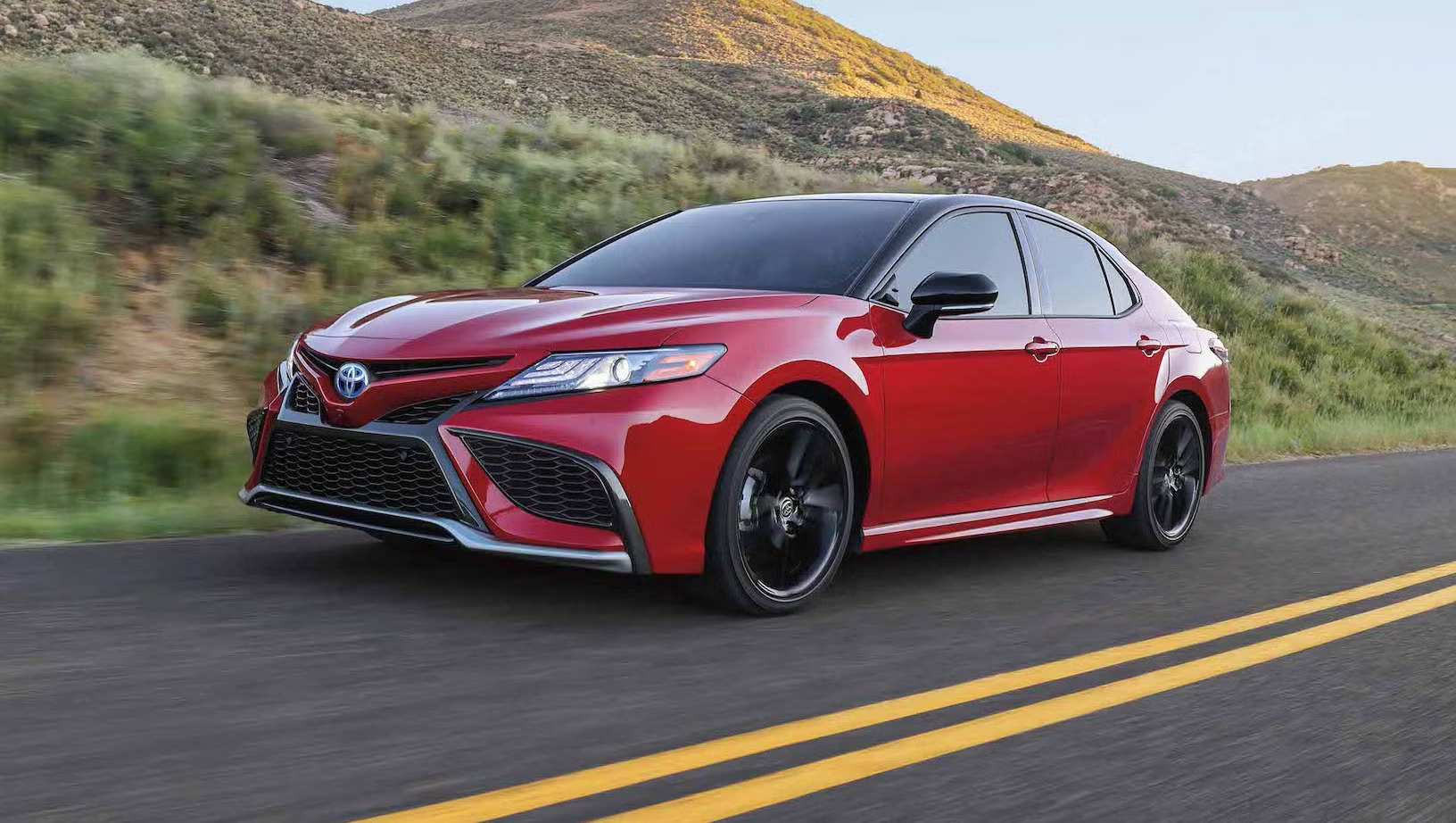
Operating costs remain consistently low throughout the Camry’s extended service life. The conventional models achieve 28-35 mpg in typical rideshare driving patterns, while the hybrid variants push efficiency to 50+ mpg in urban environments.
Maintenance requirements are straightforward and predictable, with extended service intervals for many components. The timing chain design in most models eliminates the costly timing belt replacement that affects many competitor vehicles at the 100,000-mile mark.
Perhaps most valuable to rideshare drivers is the Camry’s resistance to developing the small but irritating problems that can impact customer ratings.
Door handles, window mechanisms, climate controls, and seat adjusters maintain their function well beyond 200,000 miles, avoiding the incremental deterioration that plagues many vehicles in high-use scenarios.
The parts ecosystem surrounding the Camry creates another advantage virtually every component is readily available both through dealer networks and aftermarket suppliers, often at competitive prices due to the model’s popularity.
For the rideshare driver seeking maximum operational reliability with minimum complexity, the Toyota Camry delivers a proven platform that continues performing through years of continuous service.
4. Honda Civic
The Honda Civic combines compact dimensions with remarkable interior space efficiency, making it an ideal urban rideshare vehicle that doesn’t sacrifice passenger comfort.
Its smaller footprint compared to midsize sedans translates to easier parking and maneuverability in congested city environments where many rideshare pickups occur.
Despite its exterior size, clever interior packaging provides sufficient rear seat room for most passenger scenarios, with headroom and legroom dimensions that surpass expectations for a compact sedan.
Fuel economy figures stand among the Civic’s strongest attributes, with many drivers reporting real-world efficiency of 35-42 mpg in mixed rideshare driving numbers that significantly impact profitability in a business where fuel represents one of the largest operating expenses.
The Civic achieves these figures through advanced engine technology and relatively lightweight, without resorting to complex hybrid systems that could introduce additional maintenance concerns in very high mileage applications.
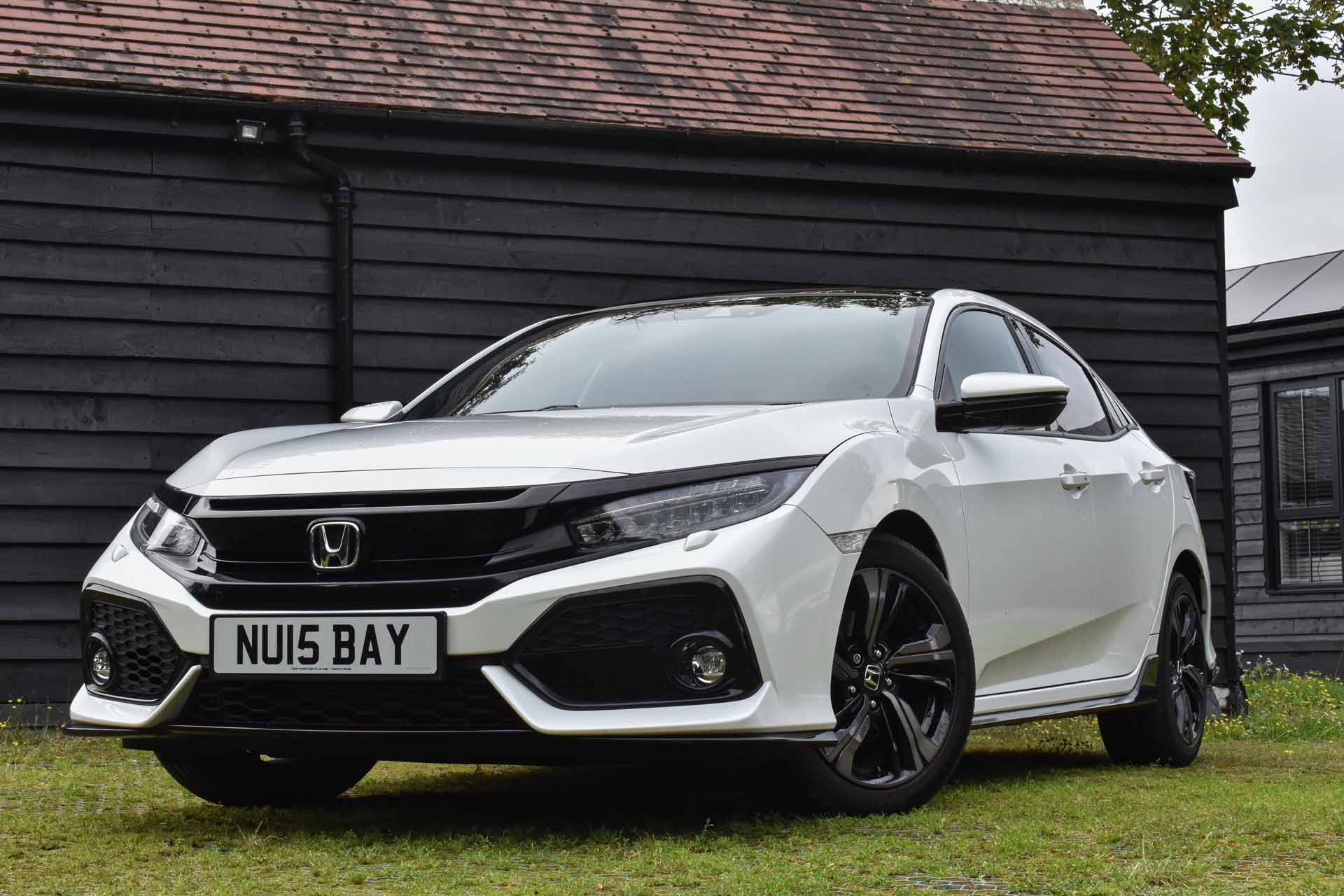
Mechanical longevity is built into the Civic’s DNA through precise engineering tolerances and conservative performance tuning. The vehicle’s powertrain operates well within its capabilities even under continuous use, preventing the accelerated wear that affects some competitor vehicles when subjected to rideshare duty cycles.
The timing chain design (in most models) eliminates a significant maintenance milestone, while the cooling system demonstrates exceptional durability a critical factor in preventing catastrophic failures that can end a vehicle’s service life prematurely.
Maintenance costs remain predictable throughout the Civic’s extended service life, with parts availability ensured through Honda’s extensive dealer network and a robust aftermarket ecosystem.
Even at mileages exceeding 200,000, most Civics maintain their structural integrity without developing the squeaks and rattles that can negatively impact passenger experience and driver ratings.
The model’s widespread popularity ensures competitive service pricing and technician familiarity at independent repair facilities, minimizing downtime when maintenance is required.
For rideshare drivers seeking a smaller yet equally durable alternative to midsize options, the Honda Civic delivers big-car reliability in a package optimized for urban operation.
Also Read: 12 Cars That Real Estate Agents Depend On For Travel
5. Toyota Corolla
The Toyota Corolla has earned global recognition as the definitive economy car that refuses to quit, making it particularly well-suited for the relentless demands of rideshare driving.
What distinguishes the Corolla in high-mileage applications is its mechanical simplicity Toyota has consistently prioritized proven technologies over cutting-edge innovations, resulting in systems that remain trouble-free well beyond 250,000 miles.
The conventional automatic transmissions found in most Corollas demonstrate exceptional longevity compared to the CVTs and dual-clutch units used by many competitors.
Operating costs remain consistently low throughout the Corolla’s lifespan. Fuel efficiency typically ranges from 32-40 mpg in mixed rideshare driving conditions, competitive figures that help maximize profit margins.
Particularly noteworthy is the Corolla’s minimal oil consumption even at advanced mileages a common issue with many vehicles as they age, but one that rarely affects properly maintained Corollas.
This resistance to developing the incremental problems that plague aging vehicles translates directly to more days on the road generating income.
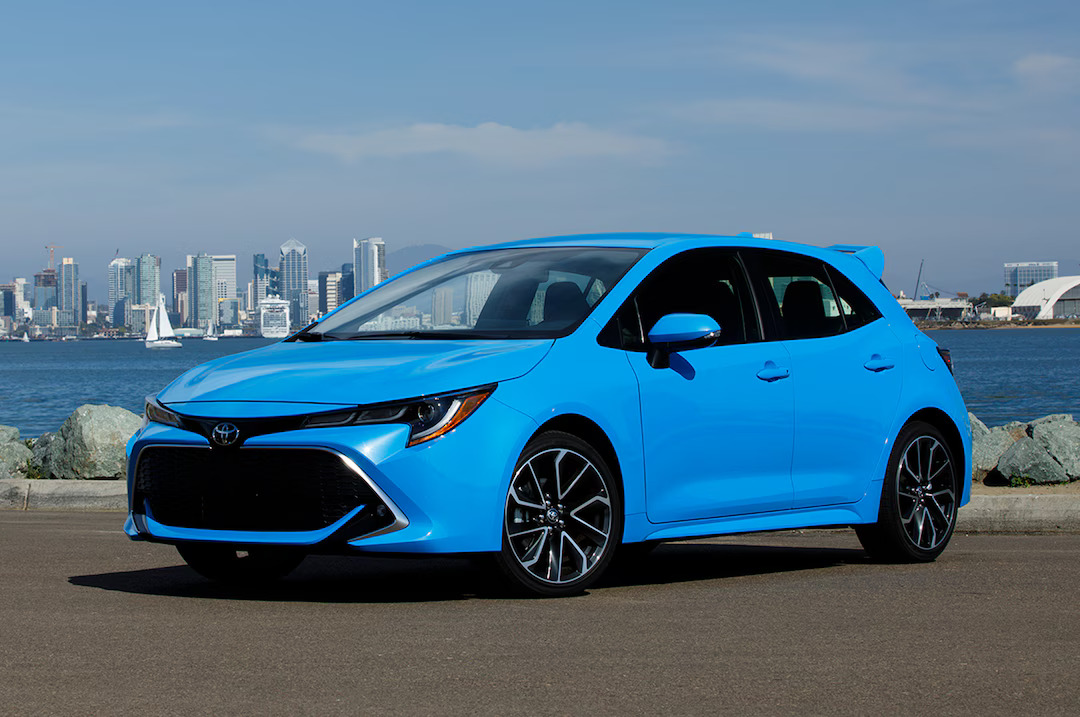
The interior dimensions, while not as generous as larger sedans, provide sufficient comfort for the typical rideshare journey duration of 15-30 minutes. Recent generations have addressed previous criticisms regarding rear seat space, with current models offering acceptable legroom for average-sized adults.
The cabin materials demonstrate remarkable wear resistance, maintaining their appearance despite the constant ingress and egress of passengers an important factor for maintaining high driver ratings over years of service.
Maintenance requirements follow predictable intervals with few surprises, allowing for accurate budgeting of operating expenses. The Corolla’s widespread popularity ensures excellent parts availability and competitive service pricing at both dealerships and independent repair facilities.
Many routine maintenance tasks remain accessible to mechanically inclined owners, helping control costs during the extensive ownership periods common among rideshare vehicles.
While lacking the passenger space of larger options, the Corolla’s combination of mechanical resilience, operating efficiency, and minimal depreciation makes it an excellent choice for drivers prioritizing long-term reliability over maximum passenger capacity.
6. Hyundai Sonata
The Hyundai Sonata has emerged as a compelling alternative to traditional Japanese sedans for rideshare applications, combining generous warranty protection with impressive long-term durability.
Hyundai’s transformation from a budget brand to a quality competitor is fully realized in the Sonata, with recent generations demonstrating mechanical resilience comparable to class leaders.
What sets the Sonata apart for rideshare use is its value proposition typically offering more features and space than similarly priced competitors, maximizing both driver comfort during long shifts and passenger satisfaction.
Interior dimensions represent a particular strength, with rear seat legroom and headroom measurements that exceed many midsize competitors. This spaciousness translates directly to passenger comfort and the positive ratings that follow.
Trunk capacity accommodates multiple full-size suitcases, making airport transfers often the most profitable rideshare trips a practical specialty. The cabin layout prioritizes straightforward controls and displays that remain functional and intuitive throughout years of continuous use.
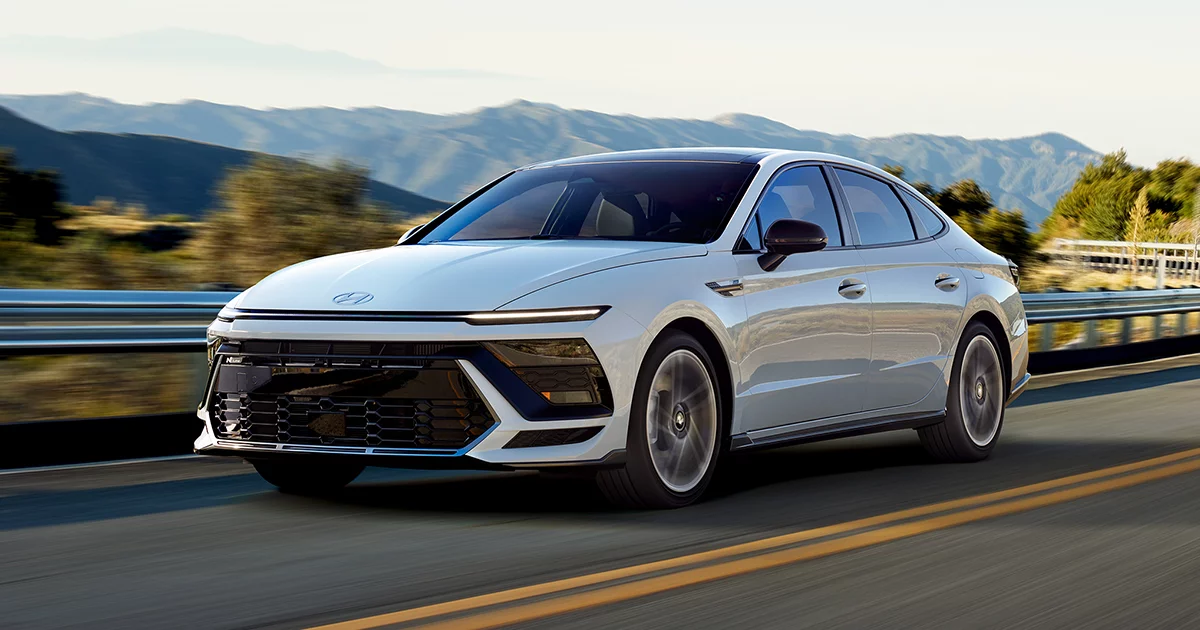
Powertrain durability in modern Sonatas has improved dramatically over earlier generations, with many examples now comfortably exceeding 200,000 miles without major repairs.
The naturally-aspirated 2.5L engine option proves particularly resilient in high-mileage applications, avoiding the potential long-term complications associated with turbocharged alternatives offered in some trim levels.
Transmission longevity similarly impresses, with proper maintenance intervals yielding exceptional service life from the conventional automatic options. Operational costs remain competitive throughout the Sonata’s service life.
Fuel efficiency typically ranges from 28-36 mpg in mixed rideshare driving patterns, while maintenance requirements follow predictable intervals.
Parts availability has improved substantially as Hyundai’s market share has grown, with most components readily accessible through both dealership networks and independent suppliers.
For the rideshare driver seeking maximum interior space without moving to a larger vehicle class, the Hyundai Sonata offers a compelling combination of passenger comfort, mechanical durability, and value retention that has earned it increasing popularity among professional drivers focusing on long-term ownership.
7. Toyota Avalon
The Toyota Avalon represents perhaps the ideal compromise between passenger luxury and mechanical durability in the rideshare sector, earning particular favor among drivers focusing on premium service tiers.
What distinguishes the Avalon is its near-luxury interior appointments and exceptional rear seat accommodations while retaining the proven mechanical simplicity of Toyota’s mainstream models.
The platform shares much of its engineering with the Camry and Lexus ES, creating a vehicle that delivers upscale passenger experience without introducing maintenance complexity.
Interior comfort stands as the Avalon’s defining characteristic for rideshare applications. The rear seat dimensions rival those found in luxury vehicles costing tens of thousands more, with legroom and hip room measurements that ensure passenger satisfaction even on longer journeys.
Noise isolation technologies create a remarkably quiet cabin environment that facilitates conversation—a subtle but important factor in earning five-star ratings.
These comfort advantages translate directly to passenger satisfaction and the accompanying higher ratings that help secure preferred status on rideshare platforms.
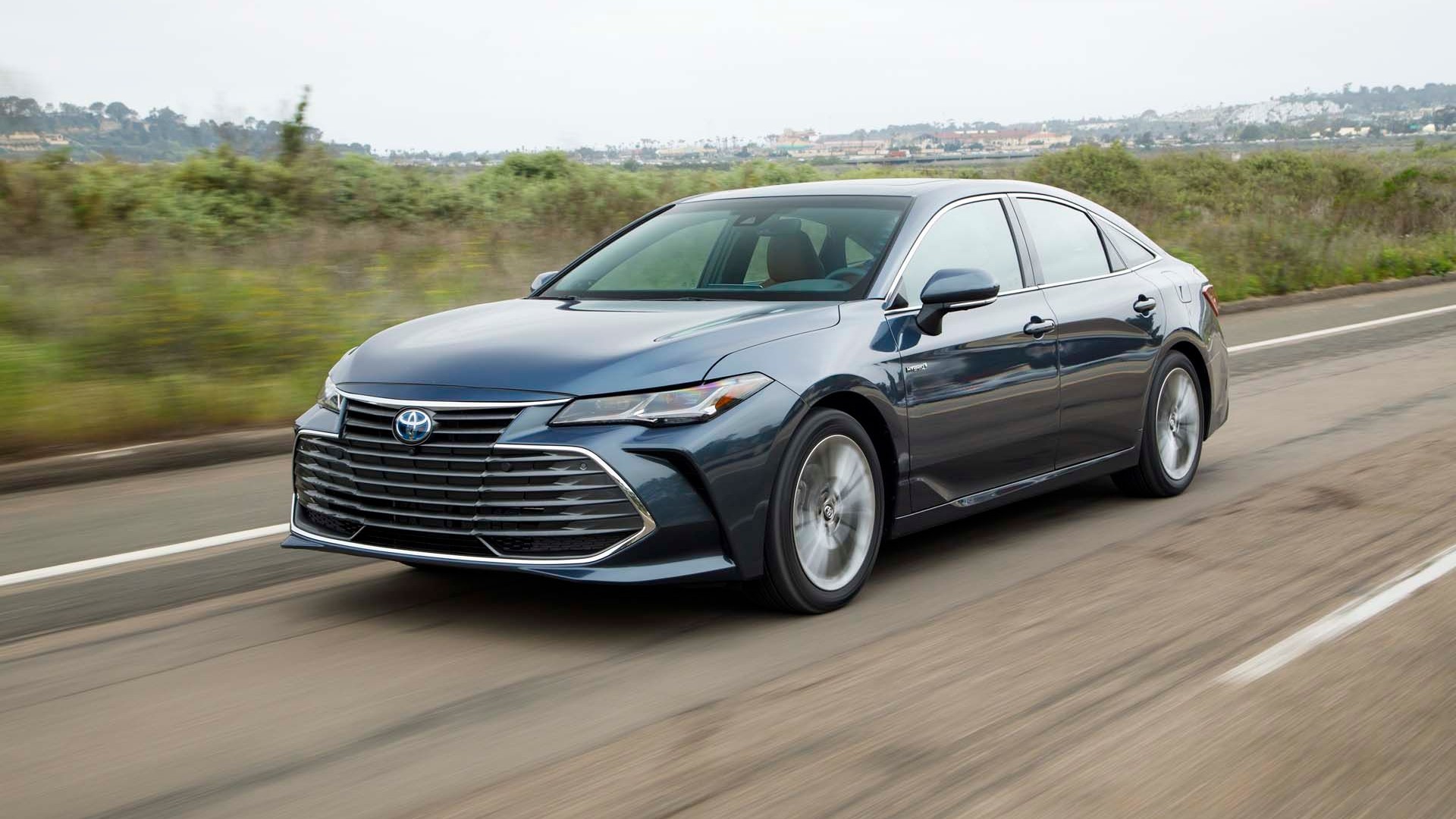
Powertrain durability mirrors the exceptional reliability found in Toyota’s other sedan offerings. The V6 engine option, while less fuel-efficient than four-cylinder alternatives, delivers impressive longevity with many examples exceeding 300,000 miles without internal repairs.
The hybrid variant combines reasonable fuel efficiency (40+ mpg in urban driving) with the proven durability of Toyota’s hybrid system, offering an excellent balance for drivers seeking both luxury appointments and operating economy.
Transmission longevity similarly impresses, with proper maintenance yielding exceptional service life. Maintenance requirements follow predictable intervals with few surprises, though costs typically run somewhat higher than smaller Toyota models due to the additional complexity of comfort systems.
Parts availability remains excellent through both dealer networks and aftermarket suppliers.
While initial acquisition costs exceed those of mainstream sedans, the Avalon’s combination of near-luxury passenger experience, mechanical resilience, and reputation-based value retention makes it an excellent choice for drivers focused on premium rideshare tiers where vehicle quality directly impacts earning potential.
8. Honda CR-V
The Honda CR-V brings a different dimension to rideshare driving through its compact SUV format, offering advantages particularly suited to certain market segments and driving conditions.
What distinguishes the CR-V for rideshare use is its combination of passenger comfort, cargo versatility, and car-like driving dynamics wrapped in a package that maintains mechanical simplicity.
The slightly raised seating position facilitates passenger entry and exit—a significant advantage for older riders or those with mobility limitations who comprise a growing segment of rideshare customers.
Interior dimensions provide excellent passenger space efficiency, with rear seat accommodations that match or exceed many midsize sedans despite the CR-V’s relatively compact exterior.
Cargo capacity represents a particular strength, with the spacious rear area accommodating multiple full-size suitcases without compromising passenger space.
This versatility allows drivers to accept lucrative airport runs and shopping trips that might challenge sedan-based competitors, potentially increasing earning potential through ride acceptance flexibility.
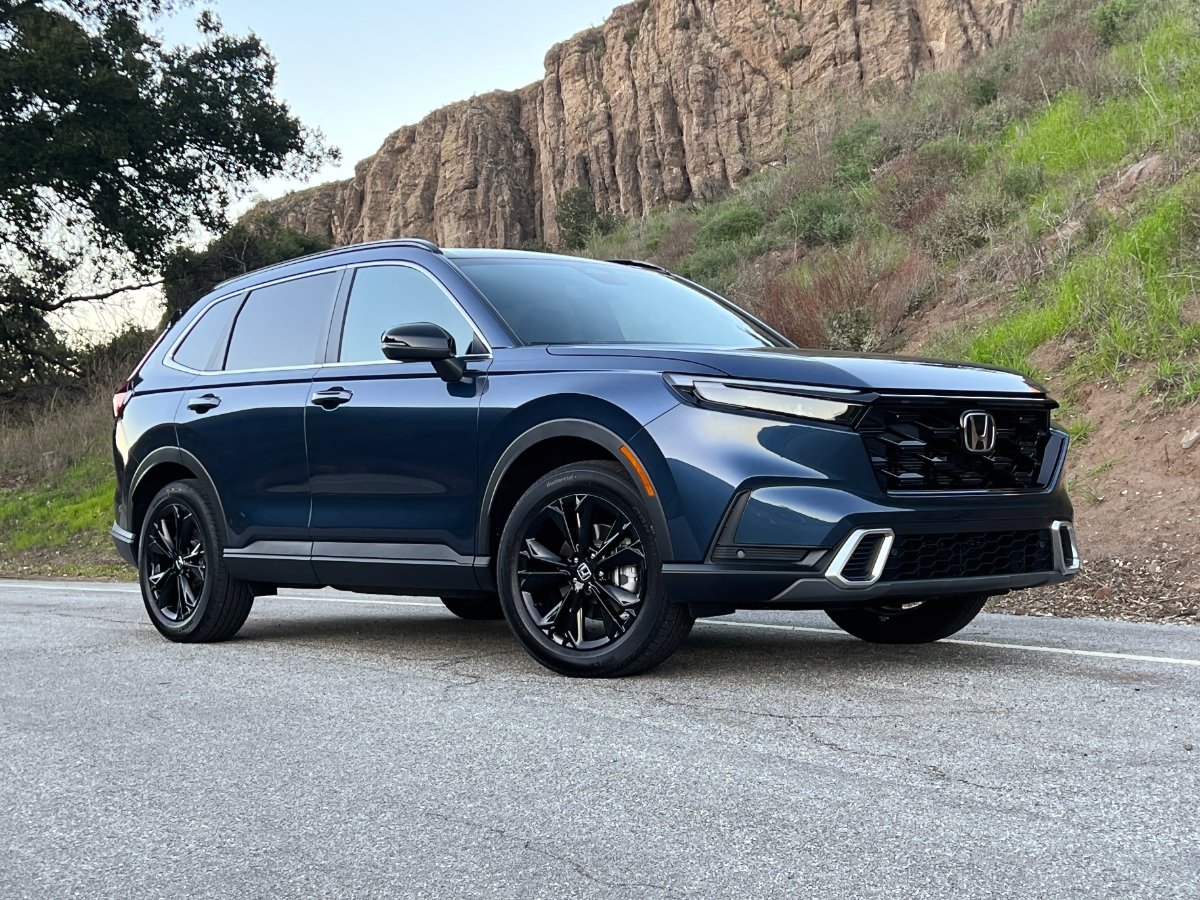
Powertrain longevity in the CR-V generally matches the excellent reliability of Honda’s sedan offerings. The naturally aspirated 4-cylinder engines found in most model years demonstrate exceptional durability, with many examples comfortably exceeding 250,000 miles with basic maintenance.
Transmission resilience proves similarly impressive in models equipped with conventional automatics, though the CVT options in more recent years lack the same extensive high-mileage track record.
All-wheel drive systems, when properly maintained, add minimal complexity while providing valuable capability in markets with seasonal weather challenges.
Operating costs remain reasonable throughout the CR-V’s service life, though slightly higher than comparable sedans.
Fuel efficiency typically ranges from 25-32 mpg in mixed rideshare driving patterns respectable figures for the vehicle class but representing one operational compromise compared to sedan alternatives.
Maintenance requirements follow predictable intervals with excellent parts availability and competitive service pricing through both dealer networks and independent facilities.
For rideshare drivers operating in markets with weather challenges or focusing on customer segments that prioritize ease of entry and exit, the Honda CR-V offers a compelling blend of utility, comfort, and mechanical durability that has proven successful through years of continuous service.
9. Mazda6
The Mazda6 represents something of a hidden gem in the rideshare vehicle world, combining mechanical durability with a driving experience and passenger environment that feels distinctly upscale compared to similarly priced competitors
What distinguishes the Mazda6 for rideshare applications is its blend of reliability metrics approaching Japanese segment leaders with interior appointments and ride quality that create a near-premium passenger experience.
This combination proves particularly valuable for drivers seeking to maximize ratings and tips without incurring luxury-vehicle operating costs.
Interior design and material quality stand among the Mazda6’s strongest attributes for passenger satisfaction.
The cabin aesthetic incorporates thoughtful details and surface materials typically found in vehicles costing significantly more, creating a positive first impression that directly influences ratings.
Acoustic isolation exceeds class standards, creating a quieter environment that facilitates conversation—a subtle but important factor in the rideshare experience.
Rear seat dimensions provide competitive space without the excess bulk of larger sedans, striking an effective balance for typical rideshare journey durations.
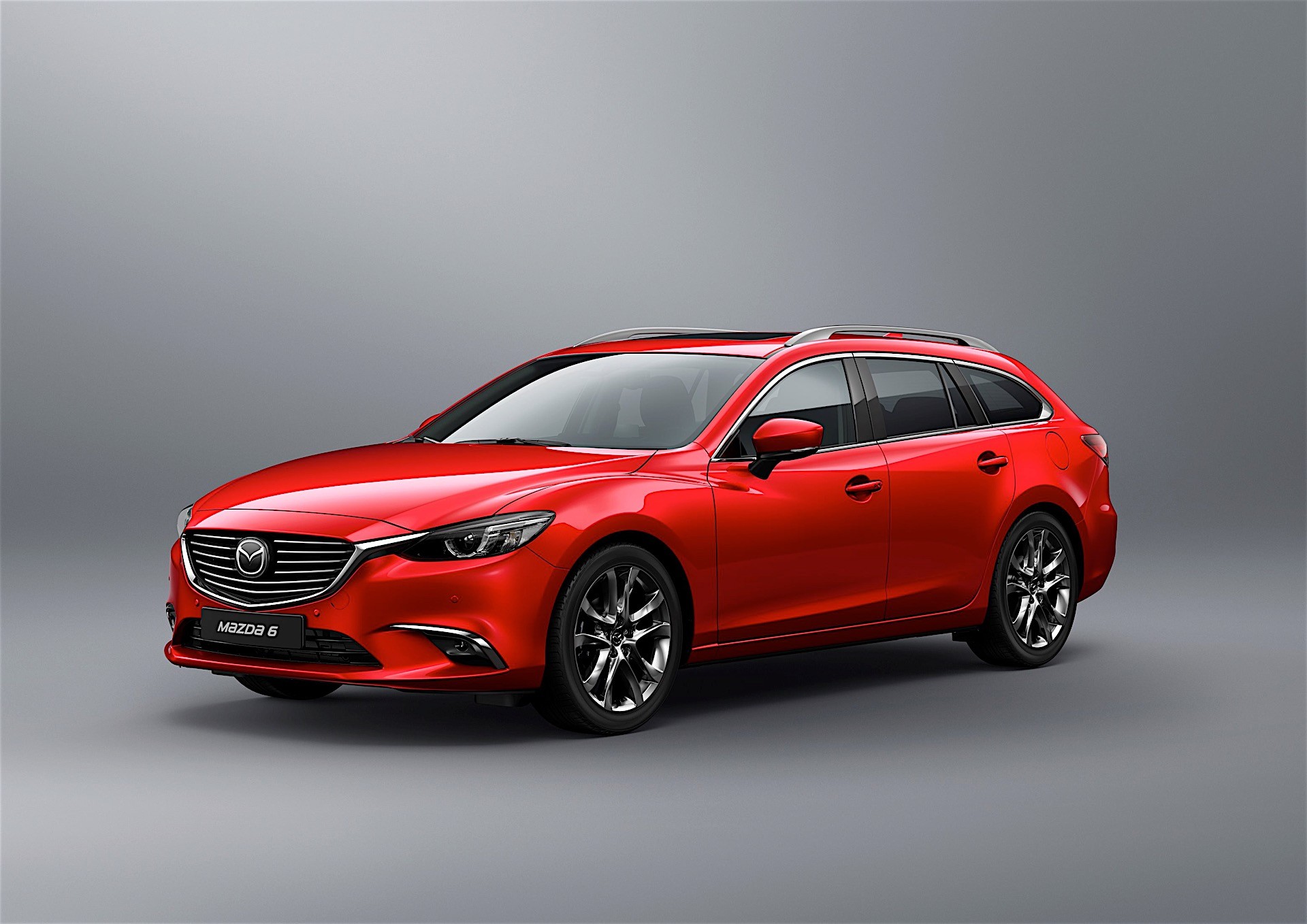
Powertrain longevity in the Mazda6 has improved dramatically in models produced after 2014, with the naturally aspirated 2.5L Skyactiv engine demonstrating exceptional durability in high-mileage applications.
The conventional 6-speed automatic transmission similarly impresses with longevity exceeding 200,000 miles when maintenance intervals are observed.
Unlike some competitors, Mazda has largely avoided complex turbocharged engines and CVT transmissions in base models, maintaining mechanical simplicity that benefits long-term reliability in demanding rideshare duty cycles.
Operating costs remain competitive throughout the Mazda6’s service life. Fuel efficiency typically ranges from 28-34 mpg in mixed rideshare driving patterns, while maintenance requirements generally align with Japanese competitors.
Parts availability has improved substantially as Mazda’s dealer network has expanded, though it remains somewhat more limited than the most popular rideshare vehicle choices.
For drivers seeking to differentiate their service through a more premium vehicle experience without sacrificing mechanical durability or significantly increasing operating costs, the Mazda6 offers a compelling option that maintains its composure well into six-figure mileage territory.
10. Kia Soul
The Kia Soul brings unique advantages to rideshare applications through its distinctive combination of compact exterior dimensions and remarkably spacious interior packaging.
What sets the Soul apart for rideshare use is its boxy design that maximizes interior volume within a footprint smaller than most compact sedans creating a vehicle that excels in urban environments while providing unexpected passenger comfort.
The upright seating position and large door openings facilitate easy entry and exit, a significant advantage for riders with mobility limitations or during frequent stops in busy service areas.
Interior space utilization represents the Soul’s defining characteristic for rideshare applications. The tall roof design provides exceptional headroom for all passengers, while the upright seating creates legroom dimensions that rival much larger vehicles.
This spatial efficiency directly improves passenger comfort and the resulting ratings, particularly for taller riders who may feel cramped in conventional sedans. The cargo area, while not as large as SUV alternatives, provides adequate capacity for airport runs and shopping trips through its highly configurable design.
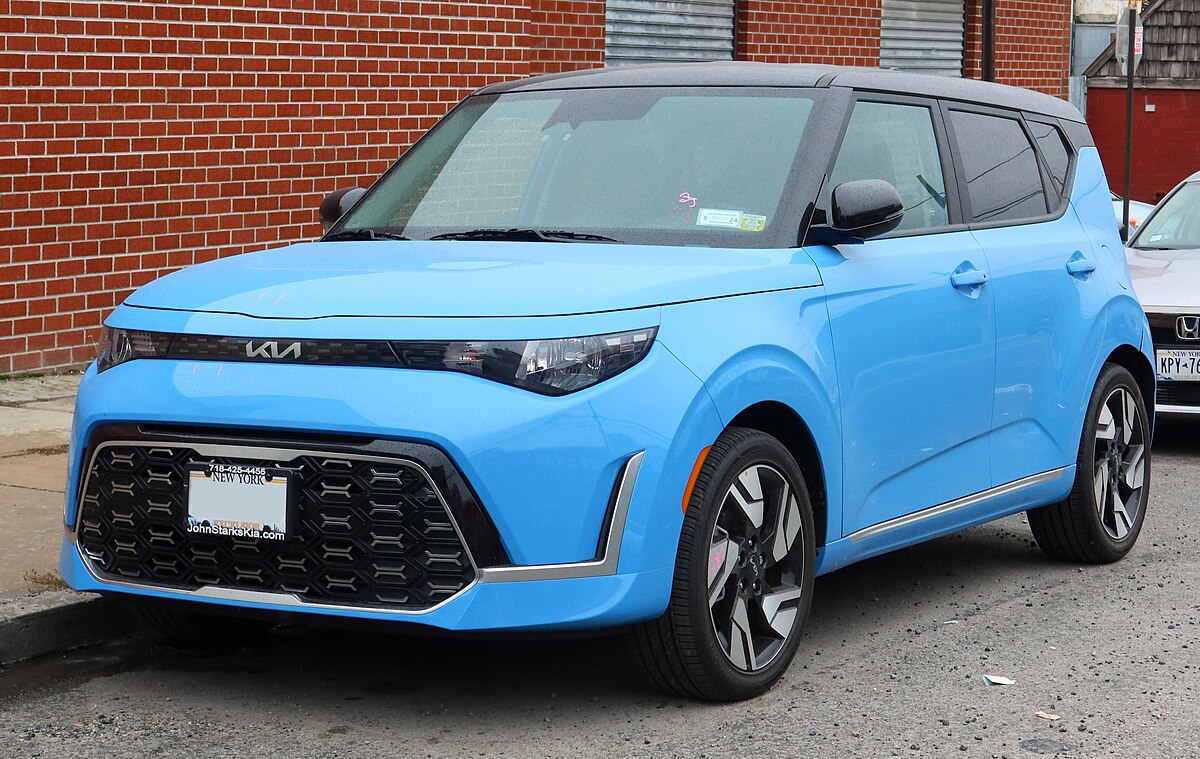
Mechanical durability in recent Soul generations has improved dramatically, with many examples now comfortably exceeding 200,000 miles with basic maintenance.
The naturally-aspirated 2.0L engine option proves particularly resilient in high-mileage applications, avoiding the potential complications associated with turbocharged alternatives offered in some trim levels.
Transmission longevity depends significantly on model year and type, with the conventional automatic options demonstrating better long-term reliability than the dual-clutch transmissions available in some configurations.
Operating costs remain quite competitive throughout the Soul’s service life. Fuel efficiency typically ranges from 26-32 mpg in mixed rideshare driving patterns reasonable figures given the vehicle’s interior volume.
Maintenance requirements follow predictable intervals with improving parts availability as Kia’s market presence has expanded.
For rideshare drivers operating primarily in urban environments where maneuverability matters but passenger comfort cannot be compromised, the Kia Soul offers a unique combination of space efficiency, distinctive styling that helps passengers identify their ride and mechanical resilience that has earned it increasing popularity among professional drivers focusing on maximum utility within minimal dimensions.
Also Read: 10 Durable Trucks for Small Business Owners, Reliable and Practical

